French Boule Recipe
Published December 9, 2024. This post may contain affiliate links. Please read my disclosure policy.
Learn how to make a traditional French Boule with a poolish preferment. This impressive artisanal loaf is perfectly chewy, soft, and fluffy on the inside and has an eye-catching dark brown crust on the outside.
Even if you’re new to bread baking, my French Bread, Homemade Artisan Bread, and this French boule recipe with poolish are the perfect additions to your to-bake list. They’re easy to master and make you feel like a seasoned baker in no time!

Classic French Boule
There’s nothing inherently wrong with baking bread in a bread machine, but I wouldn’t call that true bread-making. Making delicious artisan bread requires hands-on work, TLC, and love. Classic French bakeries (boulangeries) have mastered this, which is why they’re my #1 source of inspiration when making my homemade bread, including this traditional French boule.
If you aren’t familiar with the French boule, imagine those large, crusty balls of bread with a slightly flattened shape you often see people carrying around in movies set in medieval or ancient times. They’re renowned for their crispy, dark brown crusts and tender, fluffy crumbs.
Baking with a Poolish
While I’ve made kamut flour bread using an Italian biga, this French boule recipe calls for a similar pre-ferment agent called a “poolish.” The difference lies in the hydration levels used during the pre-fermentation process.
The higher hydration of a poolish intensifies the bread’s alcoholic aromas and complex flavors. To make it, mix 50% of your flour with 62% to 65% water and a little yeast, then let it ferment for 10 to 24 hours.
Although a poolish is not a complete fermentation like a sourdough starter (levain), it still breaks down gluten and promotes the formation of beneficial bacteria. As a result, the poolish method isn’t just for a French boule—it’s also great for baguettes and pizza dough.
Ingredients and Substitutions
- Bread flour – This has more protein than all-purpose flour, which gives the boule its chewy texture and structure. I recommend using Bob’s Red Mill Artisan Bread Flour. You can substitute all-purpose flour in a pinch, but your boule may not rise as well or have the same chew.
- Whole wheat flour – I tested this boule recipe with Bob’s Red Mill Whole Wheat Flour, which produced outstanding results.
- Water – A critical component in this high-hydration dough. Be sure to follow the recipe instructions for the water temperature.
- Salt – I like using sea salt in bread recipes, but kosher salt will also work.
- Yeast — You can use active yeast or instant yeast. If using instant yeast, mix it directly with dry ingredients—there is no need to dissolve it in water first.
How to Make French Boule Bread
To make the poolish, mix 50% of the total flour in a large container with 62% of the total 80°F to 82°F water and .5 grams of yeast until combined.
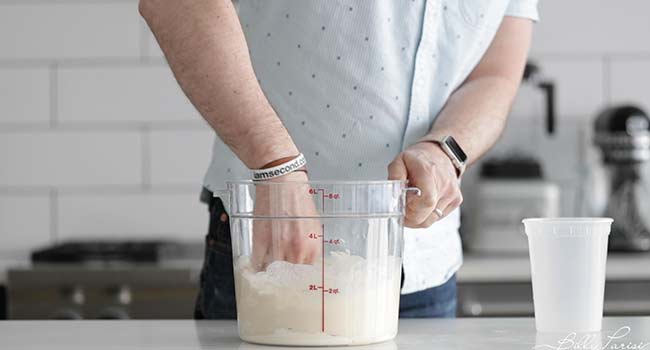
Cover the container and set aside for 10 to 24 hours.
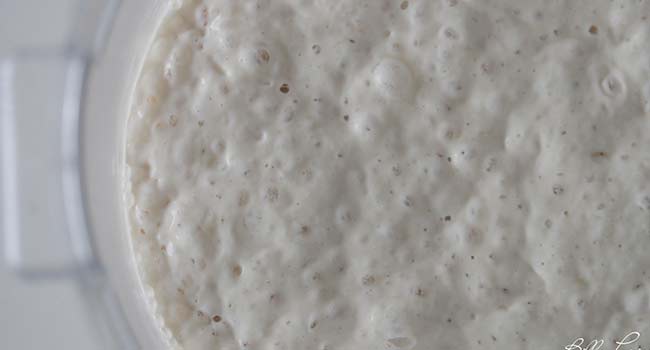
To make the boule, mix the remaining flour, salt, and remaining yeast in a separate large container.
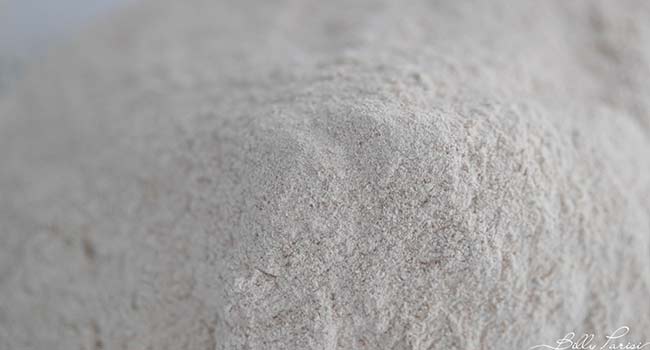
Pour the remaining 105°F to 107°F water into the container with the poolish to help loosen it up.
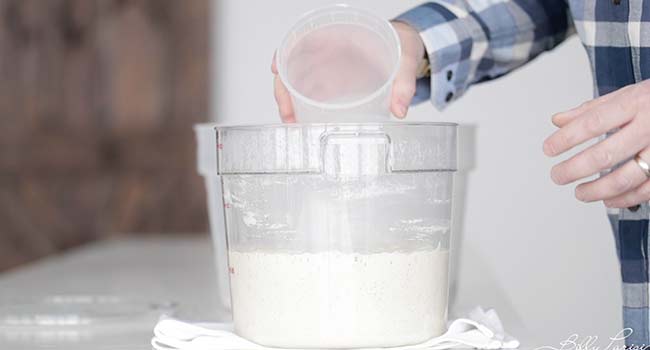
Pour the entire poolish mixture into the container with the dry ingredients. Squeeze and fold the mixture until combined, then cover and let the dough rest for 20 minutes.

After, fold the dough by stretching and turning it 6 to 8 times every 20 minutes for 60 minutes. Cover and let it rest for 2 hours or until it’s tripled in size.
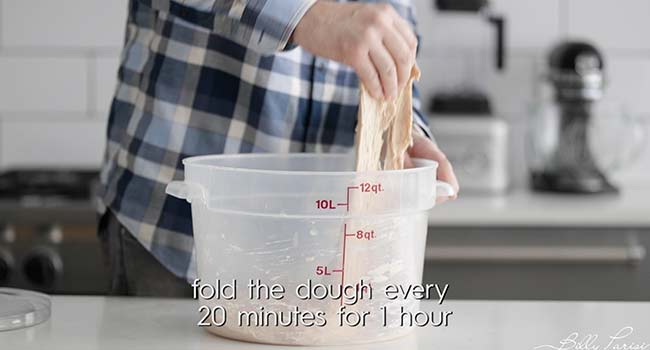
Transfer the dough to a floured surface and form it into a medium-tight ball.
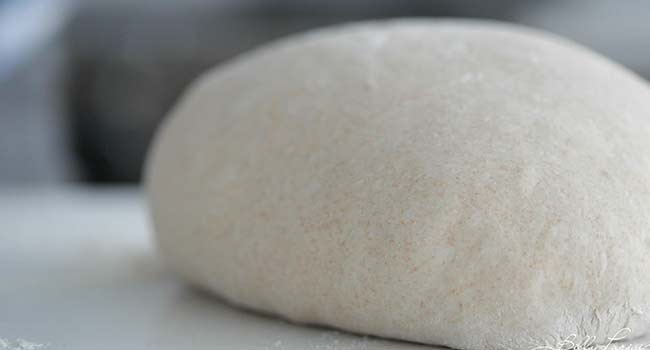
Transfer it to a heavily floured bread-proofing basket or surface, cover it with a towel, and proof it for 60 to 90 minutes.
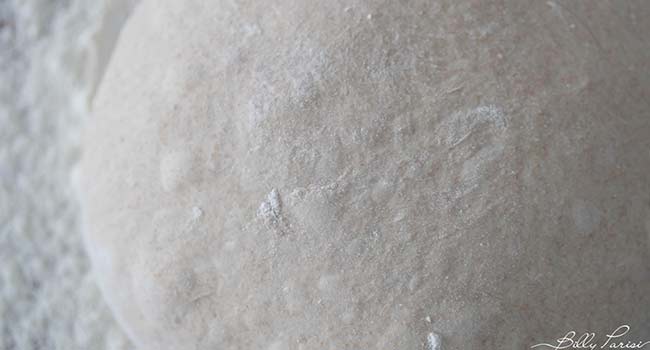
Preheat a baking stone in the oven to 500°F, then let it sit for 30 minutes. A hot baking stone simulates a traditional bread oven, helping the boule develop a crisp, dark brown crust.

Score the top with a blade, then add the bread to the hot stone. Scoring is optional but helps control the bread’s expansion, while baking, and the artisanal presentation make it look more appetizing.
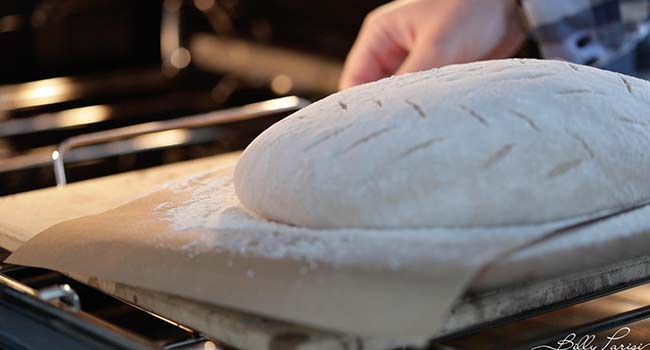
Cover the dough with a large heat-proof metal bowl to trap the steam that will help develop the crust. If you do not have a large metal bowl, adding 10 to 15 ice cubes to a baking dish and placing it on the bottom rack of the oven can also generate steam.
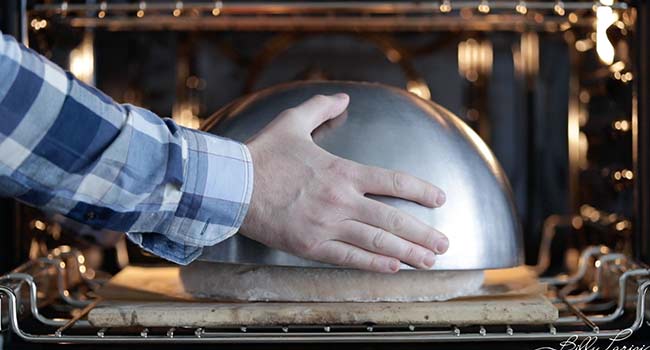
Bake the bread at 500°F for 30 minutes covered, then uncover and bake for an additional 20 to 25 minutes.
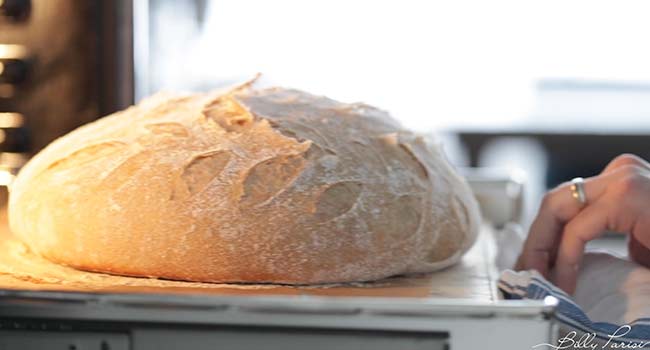
After baking, cool the bread on a wire rack for at least 30 minutes to prevent the bottom from becoming soggy and to allow the crumb to set fully.
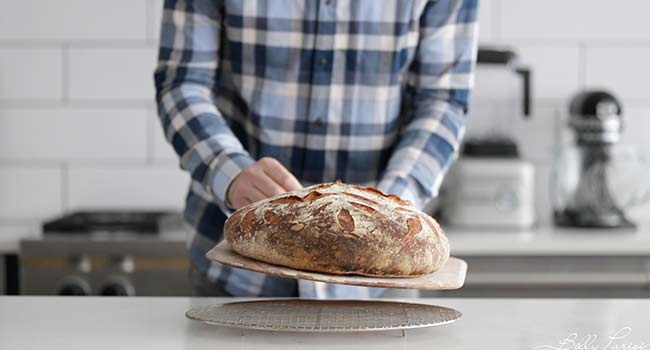
Slice and serve the boule with a smear of butter, or use it to mop up sauces from hearty soups and stews like Boeuf Bourguignon, Split Pea Soup, and Ham and Lentil Soup. You can’t beat a Croque Madame or Croque Monsieur on French boule bread.
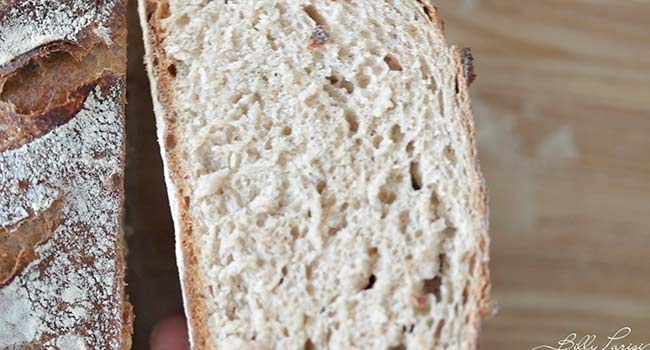
Make-Ahead and Storage
Make-Ahead: Letting the boule bread sit for 24 hours before slicing and serving is common in France. This resting period allows the flavors to develop fully and makes slicing easier.
How to Store: Wrap the boule bread in a paper bag or a clean kitchen towel and store it at room temperature for up to 2 days. For more extended storage, consider cutting the loaf into fourths, wrapping them in plastic, and refrigerating for up to 10 days or freezing for up to 3 months. Let the bread sit at room temperature for a few hours to thaw.

Chef Notes + Tips
- Slight variations in water temperature can make or break a boule. For the poolish, the water must be 80°F to 82°F to promote slow fermentation. For the final dough mix, the water must be 105°F to 107°F to activate the yeast.
- Be patient with the poolish. The longer the poolish ferments (ideally 10 to 24 hours), the more intense the aroma and flavor. This pre-fermentation develops the complex flavors that make artisan bread so delicious.
- Handle the dough very gently to develop the gluten without deflating the dough.
- I usually keep the bread dough on a piece of parchment for easy movement.
- Uncovering the bread during the last 20 to 25 minutes of baking is crucial for achieving a delightfully crunchy, dark brown crust.
- If you live in a dry climate, you might need to add extra water to the dough to achieve the proper hydration level. In humid climates, slightly reducing the water can prevent an overly sticky dough.
More Bread Recipes
- Homemade Brioche Bread
- Italian Focaccia Bread
- Homemade Pita Bread
- Homemade White Bread
- Sourdough Bread

Video
French Boule Recipe
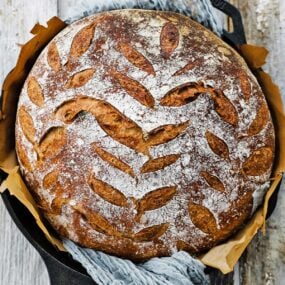
Ingredients
- 650 grams Bread Flour
- 500 grams Whole Wheat Flour
- 858 grams of water
- 24 grams of coarse salt
- 4.5 grams of active yeast
Instructions
- In a large container, mix together 550 grams of bread flour with 550 grams of water at 80° to 82° and .5 grams of yeast until combined to make a poolish. Cover and let sit at room temperature for 10 to 24 hours or until tripled in size.
- In a separate large container mix together the remaining 100 grams of bread flour, whole wheat flour, salt, remaining 4 grams of yeast.
- Add the remaining 308 grams of water at 105° to 107° to the container with the poolish to help loosen it up.
- Add the poolish and water mixture to the container with the flour, salt, and yeast and vigorously mix it by squeezing, stretching, and folding until throughly mixed, which takes about 3 to 4 minutes. Cover and let rest for 20 minutes.
- Fold the dough by stretching and turning it 6 to 8 times every 20 minutes for 60 minutes.
- Cover and let rest for 2 more hours or until it has tripled in size.
- Transfer the dough to a clean floured surface dusted with flour and form it into a tight ball. Move the dough to a floured proofing basket or clean surface. Cover it with a towel and let proof for 60 to 90 minutes
- Place a pizza stone into the oven and preheat to 500° and let sit for 30 minutes.
- Score the top with a blade, then the bread onto the hot stone. If you're using a bread basket, then Invert the dough directly onto the stone, score, cover with a large metal bowl and bake for 30 minutes, then uncover and bake for another 20 to 25 minutes or until the outside of the bread is dark brown.
- Set it on a cooling rack for 30 minutes.
- Slice and serve.


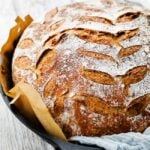
Novice break maker here. Am I correct in thinking that this dough does not get as much needing as some others? Just 6-8 turns every 20 minutes for an hour does not seem like a lot. I assume the shaping takes a fairly gentle hand. Thanks for great instructions.
Dough needs folding, not kneading so yes you are correct.
I’ve made this several times with all kinds of success. I have a cast iron Dutch oven and a cast iron skillet that fits perfectly on top. For this recipe, I should do two loaves. I used 3/4 of the dough last time and it was a bit crowded in the 10” pans. I do portion off a small piece and use that for a pizza crust. Thanks so much. Video is helpful. Wish I could send a pic of my beautiful bread. Not as pretty as yours, of course!
Chef could I substitute rye instead of whole wheat for this French Boulle Thk you got all ur great recipes
you could. May have to up the hydration bt 1-2%
I did exactly this with wholegrain rye and the results were great.
I made this last week and it was excellent! Could I divide the dough into two pieces shape into batards?
Yes absolutely!
At what point should I divide into two pieces? After the two hour rise?
yes
Amazing bread every time!
Now they want semolina bread! Can I just substitute Whole wheat for semolina?
I think you could.
This is an awesome recipe and always yields awesome bread!
My hubby loves crust so I divided the dough into four long loaves before the final proof. Baked at 425 for 22 minutes until internal temp reached 205 degrees.
However, crust is light in color and not too crisp. Any suggestions would be appreciated! Thank you so much for teaching me to be a better cook and baker! You rock💕
Dear Chef Parisi,
Thank you so much for this recipe! Recently, I have been very into poolish in baking. Something about each recipe I tried made me very frustrated with the finishing results. All of the bread I made became slightly saggy after cool and so hard to slice after freezing for a night, but the loaves of bread I bought from bakeries are not like that? Do bakers actually use some kind of additives in the dough? Can you share the secret with us?
No additives used.
The ferment was terrific with loads of flavor and lift. My only question is that my bread had a dark interior compared to the video. Wondering how almost 40% whole wheat was so light.
Thank you chef
Hello!
Wonderful recipe!
Made it few times – for enjoyment of family and friends !
A tip: I cut the parchment paper that lines the cast iron pot in a shape of clover : this way no dents in the shape of the bread ! Perfect boule
Thank you Chef !
Hi- Can you use a starter in place of the yeast both times it’s called for? (I’m trying not to use commercial yeast)
Yes absolutely but there will be more folds involved. Starter can be 10-15% of the recipe.
Hi Chef Billy.
I’ve had this question in my mind for a while: Can you cold ferment the dough even tough it already has a poolish?
Because I heard that and excellent bread is a bread that has had 3 stages of fermentation, and for that reason it sounds ok to me to cold ferment the dough considering that we are already using a pre-ferment.
Thanks in advance, greetings from México.
Yes after your final fold and shape you could put it in the refrigerator overnight.
Hello! What size of proofing basket do you use for a full recipe?
By the way…love, love, love your kamut bread recipe. I’ve made and given away several boules. Huge hit among my family and friends!
10″